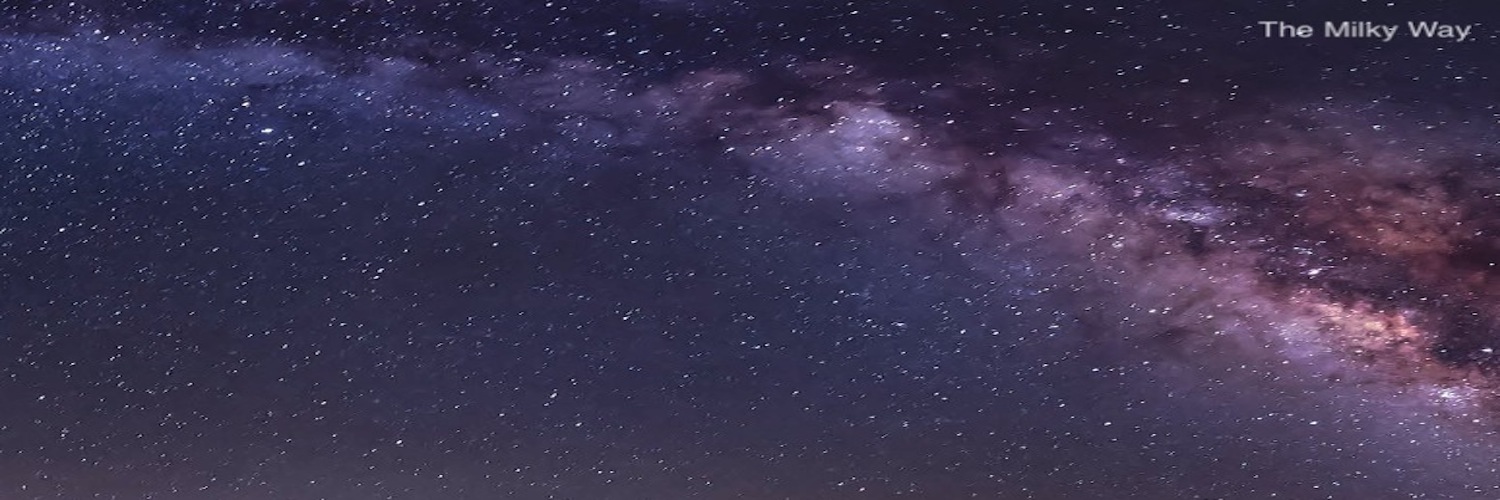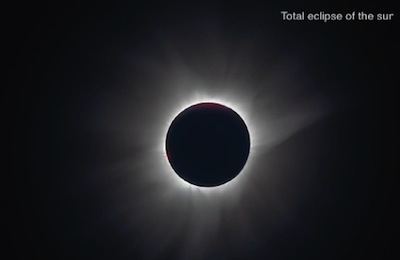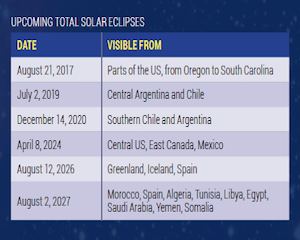
Observing a Total Eclipse of the Sun
 Today, George Moromisato, author of 101 Amazing Sights of the Night Sky, helps us to observe a total eclipse of the sun.
Today, George Moromisato, author of 101 Amazing Sights of the Night Sky, helps us to observe a total eclipse of the sun.
Lunar eclipses happened regularly enough that ancient astronomers were able to work out how to predict them. But total eclipses of the sun, which happen at a given spot only a few times per millennium, were impossible to predict with any accuracy. Imagine, then, how awesome and scary it must have been for our ancestors to see the life-giving sun swallowed up completely without warning. They must have watched anxiously as the skies darkened, perhaps wondering whether the sun would disappear forever. Within minutes, however, the light and warmth of the sun reappeared and everything would go back to normal—at least for a few more centuries.
Today, of course, we know that the sun is eclipsed when the moon happens to pass in front of it. We can enjoy it as one of nature’s greatest spectacles. But it’s only the coincidental size and distance of the moon that make total eclipses possible. If the moon were smaller or farther out, it wouldn’t be able to cover the sun completely. In fact, the moon is slowly drifting farther away from Earth.
In a billion years or so, the moon will appear small enough that it won’t fully eclipse the sun. The age of total eclipses will be over, so be sure to see a total eclipse of the sun before then.
What to Expect?
Seeing a total eclipse of the sun is a once-in-a-lifetime experience. Beyond the rarity of the phenomenon, the visceral feeling of watching the sun disappear and being plunged into darkness will make this an unforgettable event.
For North American observers, the best chance to see a total eclipse will come on August 21, 2017, when dozens of U.S. states will witness totality. If you miss that chance, you’ll have to wait until 2024, when the moon’s shadow will cross from northern Mexico up through the central U.S. and through Maine.
Observing Tips
 Practice safe observing. The most important observing tip is to never look at the sun with unprotected eyes, even when the sun is partially eclipsed. And definitely do not look at it with binoculars or a telescope, as this will cause permanent eye damage. Sunglasses will not prevent this damage; if you want to view it directly, you’ll need specially made eclipse glasses, which are available for just a few dollars online. Many astronomy magazines also include such glasses in their issues when eclipses occur.
Practice safe observing. The most important observing tip is to never look at the sun with unprotected eyes, even when the sun is partially eclipsed. And definitely do not look at it with binoculars or a telescope, as this will cause permanent eye damage. Sunglasses will not prevent this damage; if you want to view it directly, you’ll need specially made eclipse glasses, which are available for just a few dollars online. Many astronomy magazines also include such glasses in their issues when eclipses occur.
Project the sun’s image. You can use a small telescope, binoculars, or even a pinhole camera to project the sun’s image on to a white sheet of paper. This is a perfectly safe way to view the sun, and it allows multiple viewers to share the experience. Make sure you aim the instrument without looking through it. (See page 20 of 101 Amazing Sights of the Night Sky for instructions.)
Observe your surroundings. As the moon begins to eat at the sun, see if you can pinpoint when it starts getting dark. You’ll also feel the air get cooler and may even notice animals going into their nighttime routines.
Pay attention to the shadows cast by trees. You may notice hundreds of little crescent suns! The random arrangement of leaves sometimes creates little pinholes that project the sun’s image on the ground.
The Diamond Ring
Just as the moon is about to completely cover up the sun, you’ll see one last spot of bright light situated on a bright ring. This is known as the diamond ring, and it’s a great moment to photograph, assuming you have a safe setup.
The Corona
The highlight of the eclipse will be your view of the corona. With the brightness of the sun’s disk obscured, you’ll be able to see the superheated gases of the sun’s corona streaming away at immense speeds. You’ll see a luminous dance of filaments and jets unlike anything you’ve ever seen.
Until recently, no photograph or video has been able to accurately depict this scene. Unlike our eyes, cameras have trouble capturing both the very bright and very dim features of the corona, so enjoy these precious few minutes.



Pingback: Perseids Meteor Shower: An Amazing Show in the August Night Sky - Adventure Publications